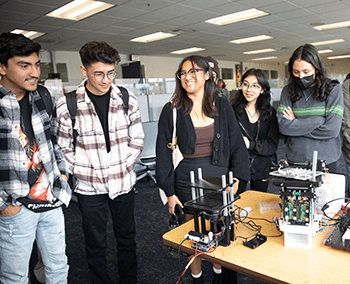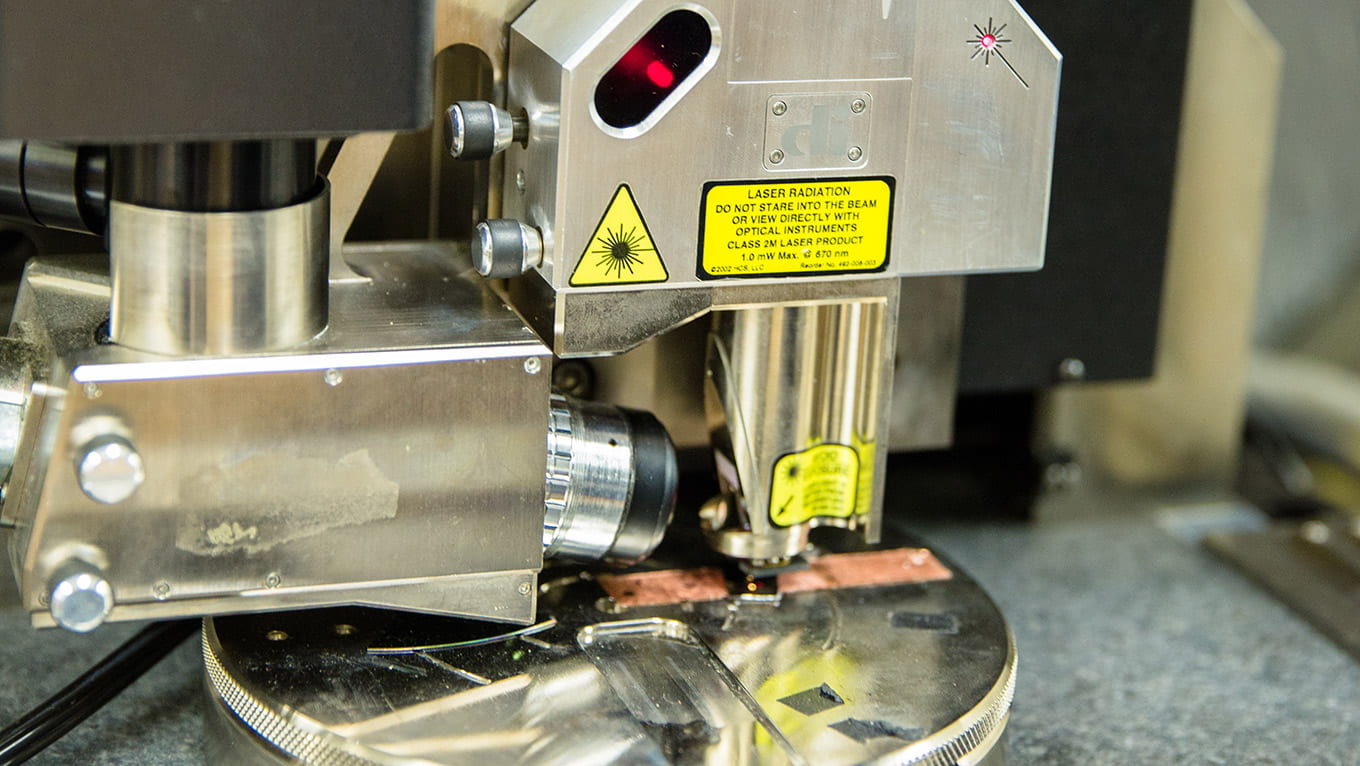The UC Santa Cruz Genomics Institute has created a new Live Cell Biotechnology Discovery Lab as a maker space dedicated to creating the next generation of technologies for remote education.
The lab, which occupies part of the second floor of the UCSC Westside Research Park, is inspired by an effort to improve access to STEM education through collaborations with hispanic-servicing high schools both locally and in Latin America.
“Technological change and scientific discovery are coming at us like a tidal wave. Even though we are all in the same storm, we are not all in the same boat,” says Mohammed Mostajo-Radji, an assistant research scientist at the Genomics Institute who has been appointed as the Discovery Lab’s director. “The new technology we’ve created reaches everyone, and embodies the open data culture of the Genomics Institute. It is meant to provide rich, experimental science education opportunities where currently there are none.”

In 2020, a team of researchers from the UC Santa Cruz Genomics Institute and UC San Francisco launched a pilot program that used a low-cost 3D camera system to allow students at Alisal High School in Salinas California to participate in novel scientific experiments with real live cells. Coming from an agricultural community, the students expressed interest in the effects of fertilizer runoff in streams and rivers. In the first iteration, students observed and measured the difference in fin and tail development of zebrafish embryos exposed to different levels of ammonium nitrate, a hazardous chemical found in fertilizers. They discovered that at relatively low levels, the chemicals significantly delayed fin development, an observation that had not previously been published. The next year, another class observed the effect of novel drugs on neuroblastoma, a cancerous tumor.
To Mostajo-Radji, who used to run a large non-profit organization dedicated to STEM education in Bolivia and knows how valuable project-based learning opportunities can be for engaging students, the ability to bring experiments on live human cells to a high school class is nothing short of extraordinary.
“When I was in high school I could have never dreamed of doing a biomedical research experiment. Here we have students in Salinas, California, doing just that. How cool is that?”
Not only is the technology allowing students from underrepresented backgrounds access to complex experiments, but it is also scalable in a way that most approaches are not. While the cost of creating physical labs or even just bringing students from distant communities into an R1 university biomedical lab increases sharply with each student, the cost of running remote experiments through this technology is only marginally larger for 200 than it is for 20 students. Scaling up by a few additional orders of magnitude, it could open access to project-based STEM education to students throughout the globe.
“One of the sustainable development goals of the UN is to obtain quality education for all by 2030,” Mostajo-Radji says. “With current technology and education trends there is no way we are going to reach that goal, so that is what we are working toward, to open access to all students.”
As the pilot programs with Alisal High School and students in Latin American countries have continued, Mostajo-Radji and his team have been working to overcome a number of economic, cultural, technological, and system barriers to remote education, which they hope to continue to reduce through their efforts in the new Discovery Lab.
One of the largest barriers to remote education, however, has always been student engagement, and this is the barrier that the new technology seems to have dissolved the most.
While most Internet and cellphone-based learning modules do not allow students to interact much, if at all, with the materials they are studying, employing the Discovery Lab’s cloud-based system will enable students to design and control experiments that are of interest to them.
“The cancer research in a dish idea came from students, not us,” Mostajo-Radji explains. “We want feedback from students on what is interesting to them, because that is how we get students engaged.”
The Live Cell Biotechnology Discovery Lab is currently soliciting feedback and new collaborations on the Live Cell Genomics Website to discover how their technology can be most useful to educators and researchers at high schools and primary undergraduate colleges. The Discovery Lab is dedicated to bringing these opportunities to more classrooms because they are convinced that it could be a huge game-changer for democratizing and diversifying STEM education.
“Having the opportunity to meet scientists and learn to think like a scientist by experimenting at a young age is what drew me to science,” Mostajo-Radji says. “That formula really works.”




